An important milestone for Ferrara: on Saturday,September 6, Palazzina Marfisa d’Este, one of the most important Renaissance residences in northern Italy, will reopen its doors to the public. Located along Corso Giovecca, the residence is once again accessible after significant structural consolidation and plant upgrades, which made it possible to combine historical preservation with the needs of contemporary enjoyment. The layout project, overseen by the Monumental Heritage Service and the Culture, Tourism and Unesco Relations Service together with the Ferrara Arte Foundation and the relevant Superintendency, had the main objective of enhancing the 16th-century complex, respecting its architectural and decorative identity, and making it fully accessible and inclusive.
The work carefully considered the historical stratifications of the building and the modifications made during the 20th century. The museum’s new layout integrates updated textual apparatus, multimedia tools and a complete restoration of all exhibits, with the intention of offering an immediate understanding of the history of the mansion. The Palazzina, built between 1556 and 1560 by Francesco d’Este and intimately linked to the figure of his daughter Marfisa, had been restored in the early twentieth century and fitted out in 1938 by Nino Barbantini to transform it into a representative space, acquiring furnishings and works from the sixteenth, seventeenth and eighteenth centuries. Over time, however, the original layout lost some of its original physiognomy, with works such as the seventeenth-century tapestry from the Oudenaarde Manufactory depicting Judith Beheading Holofernes transferred to the Municipal Palace in the 1950s and many objects placed in glass cases for conservation reasons.
The new exhibition itinerary was created in collaboration with BPER Banca, which owns most of the furnishings and historical works, and is enriched with medals, coins and ceramics from the civic collections and the Fondazione Estense. The display now makes it possible to clearly outline the history of the Palazzina, its uses, transformations and main protagonists: Francesco d’Este, founder of the residence; Marfisa, a central figure in Ferrara’s cultural life between the 16th and 17th centuries; and Nino Barbantini, architect of the Palazzina’s restoration in the 1930s.
Renewed interior lighting enhances the grotesque ceilings, allowing details previously in shadow to be admired, while the rooms have been made fully accessible through ramps and visitor support tools. Audio guides in Italian, English and LIS (Italian Sign Language), tactile paths with reproductions of some objects and multisensory cards are available, ensuring inclusive and complete enjoyment.
“Palazzina Marfisa d’Este, a building of extraordinary value for the city,” comments Mayor Alan Fabbri, is reborn today thanks to important investments and a new vision for this museum space that, thanks to its name, reminds us of and makes tangible the essential role of the female presence in Ferrara Estense. At last, this place, extraordinary both for its connection to the Renaissance and to Barbantini’s design of the last century, will reopen to the public renewed and accessible to all. The Palazzina is an integral part of a strategic plan for the recovery, improvement and enhancement of Ferrara’s palaces, mansions and historic buildings that, piece by piece, intends to return Ferrara’s Unesco heritage sites of culture and art to the citizens and tourists-who are increasingly animating the city."
“These are important years for our city’s museums,” stresses Culture Councillor Marco Gulinelli, “the post-earthquake 2012 works have led to painful closures, but the reopenings return completely renovated spaces. The result is new layouts that allow for the best enhancement of the collections while meeting the most up-to-date regulations on accessibility and inclusiveness. The intervention returns a Palazzina improved in structural terms and enhanced in historical, architectural and decorative terms, so that it can once again become one of the venues for the rich cultural offerings we are developing for the city and its visitors. The inauguration of this museum therefore adds a great reason for satisfaction, right on the occasion of the celebrations for the 30th anniversary of Ferrara’s inclusion in the Unesco heritage list.”
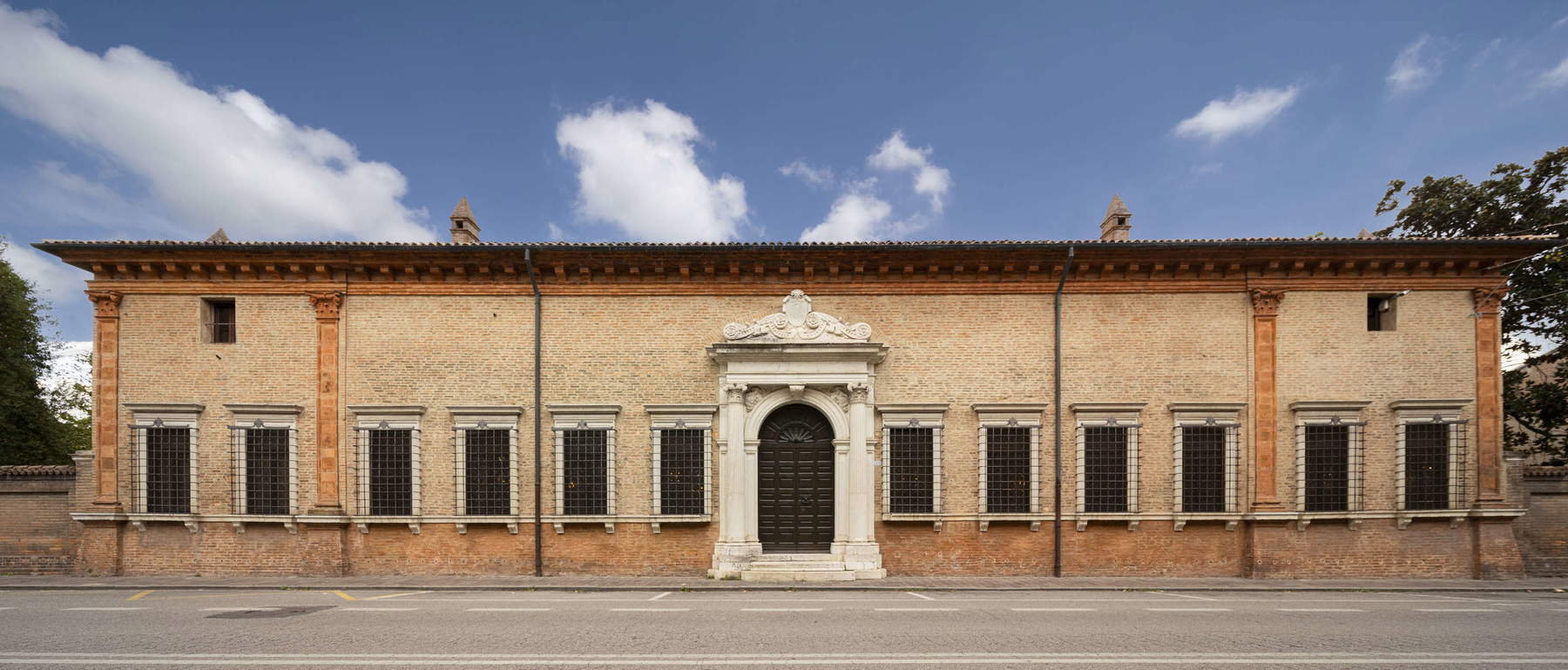
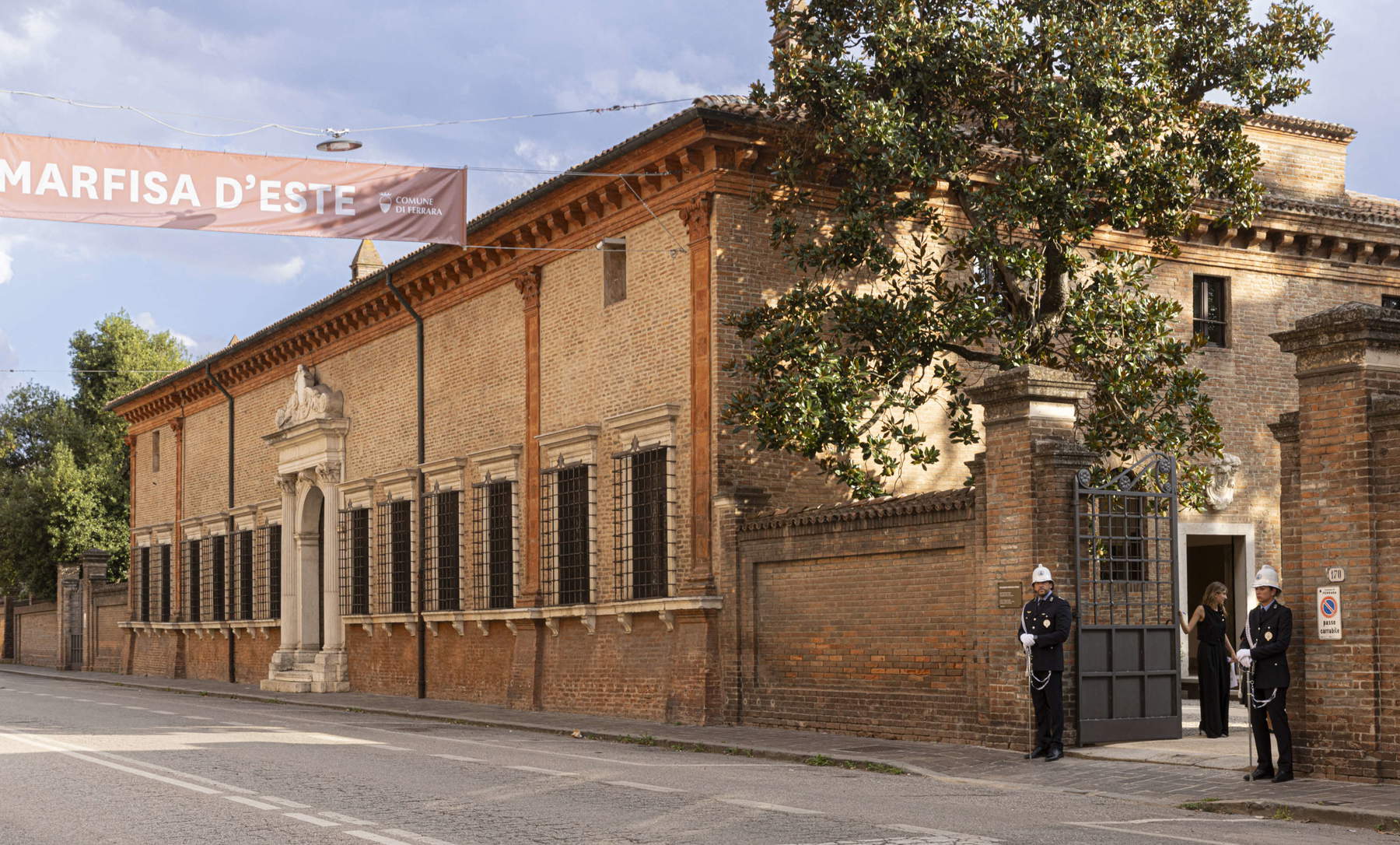
The museographic project aimed to meet multiple needs that emerged from the restoration: telling the story of the building and its collectors, enhancing the frescoed ceilings, and ensuring architectural and multi-sensory accessibility. The layout dialogues with Barbantini’s historic 1938 layout, maintaining its scenic presence but visually distinguishing itself with consistent and recognizable design elements. The eight rooms house 166 objects, multimedia additions and visitor support apparatus, with spatial structures with rigorous geometries and display cases designed specifically for each type of object, from medals to ceramics, from busts to musical instruments. The metallic sun tint used for the new structures reflects natural light, lending lightness to the environment and harmonizing with the historic architecture.
Prominent among the display elements are a large table with Ferrara ceramics under cloche to evoke a Renaissance canteen, the “wunderkammer” by Barbantini that collects objects purchased on the antiques market, vertical showcases with medals, coins and coeval tiles, multimedia totems on Marfisa’s literary and musical context, and in-depth paneling with a long timeline that reconstructs the history of the Palazzina from the Herculean Addizione to the 1938 inauguration.
The new lighting system was designed to enhance both the ceilings and the pictorial and sculptural works, keeping the devices hidden within linear veils. The result is a balance between preserving Barbantini’s historic layout and providing the public with an experience that allows them to appreciate the variety and richness of the collection.
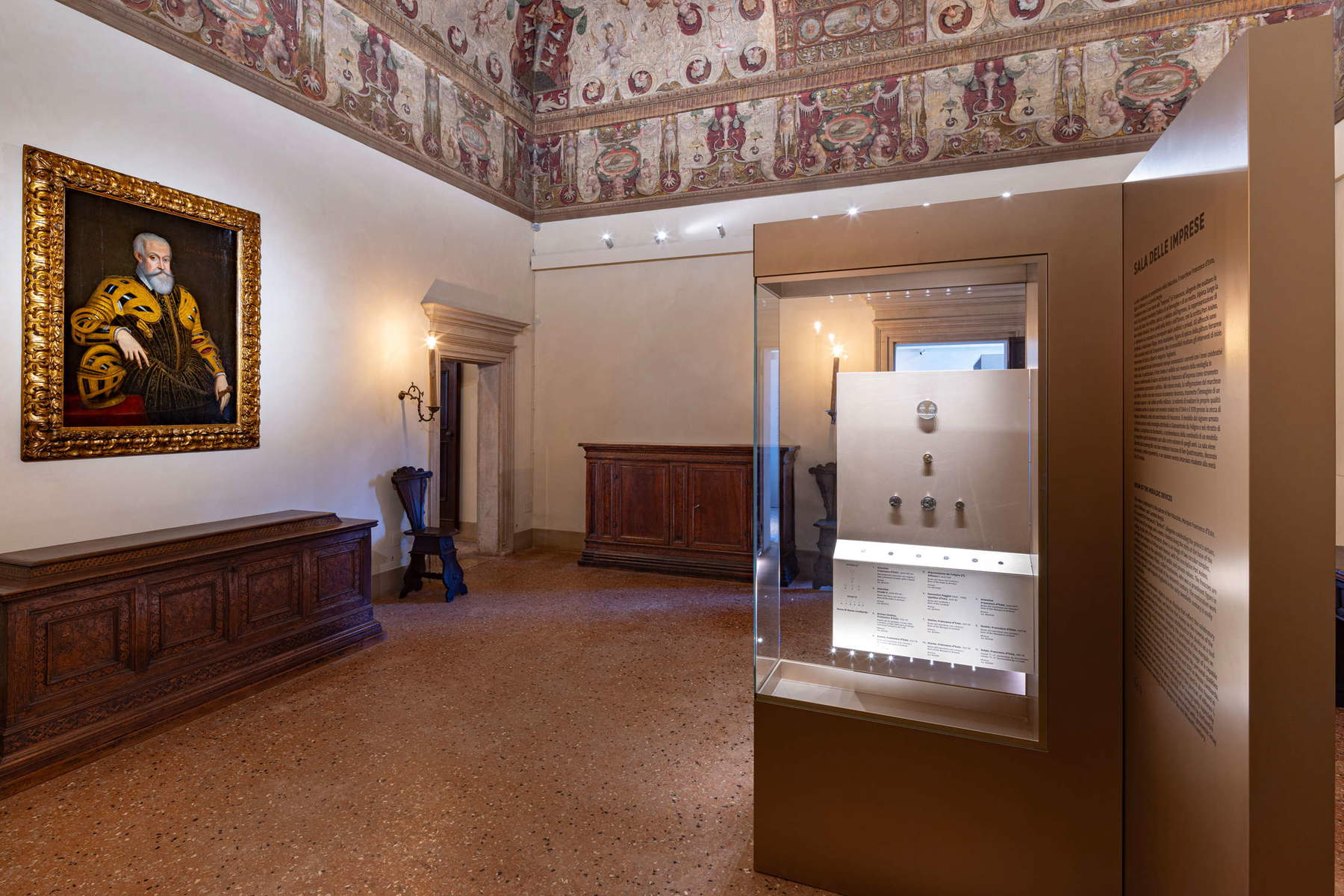
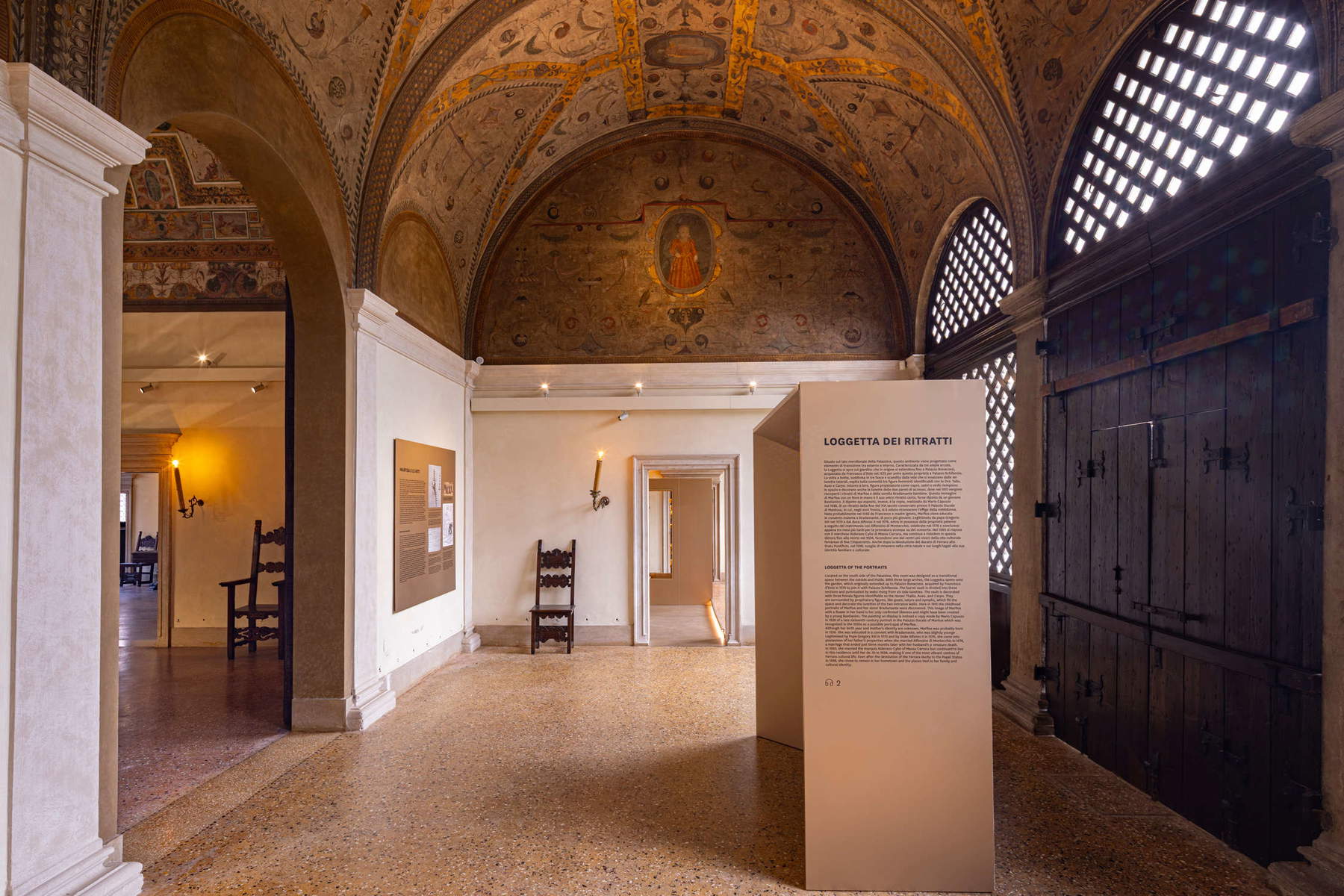
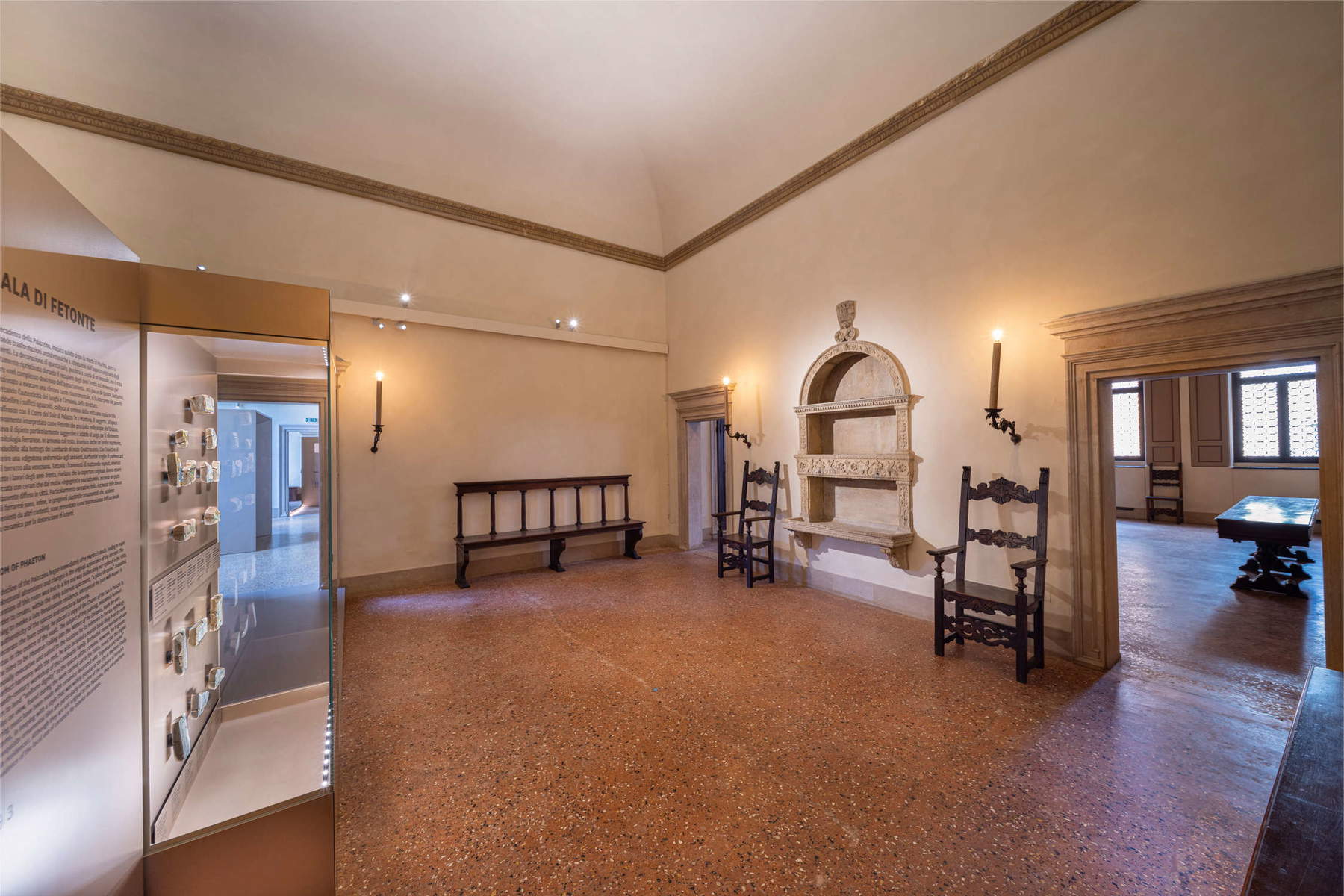
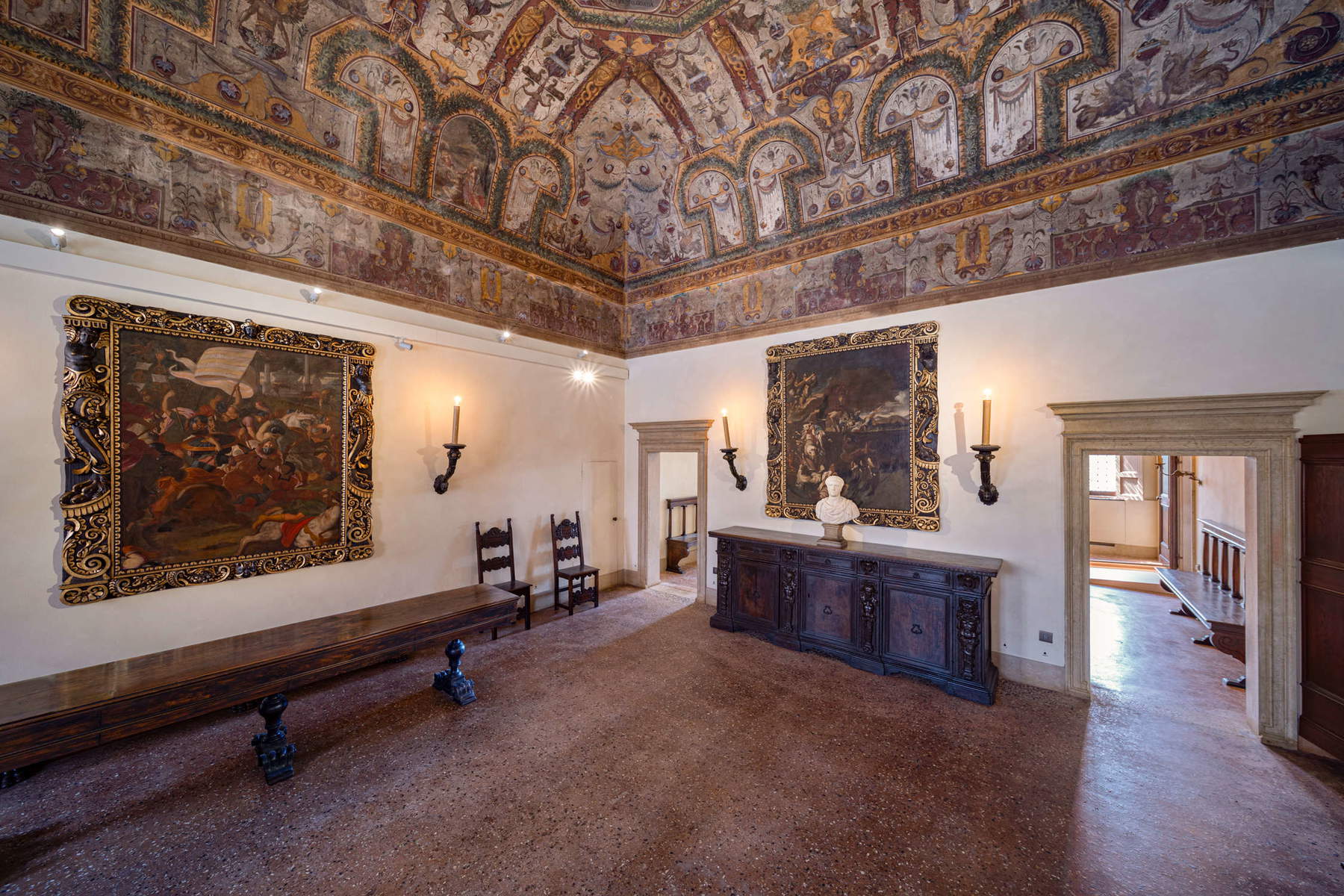
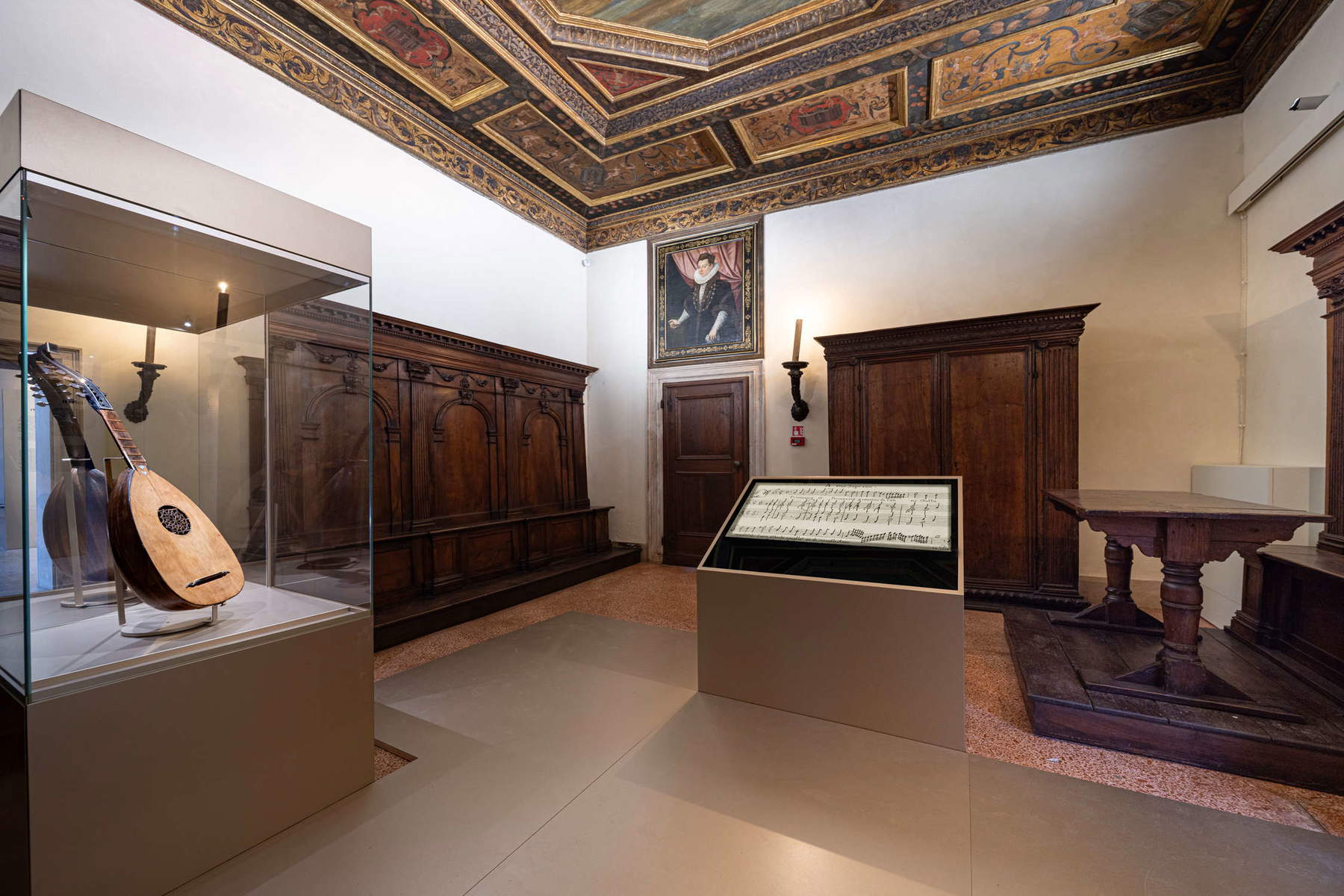
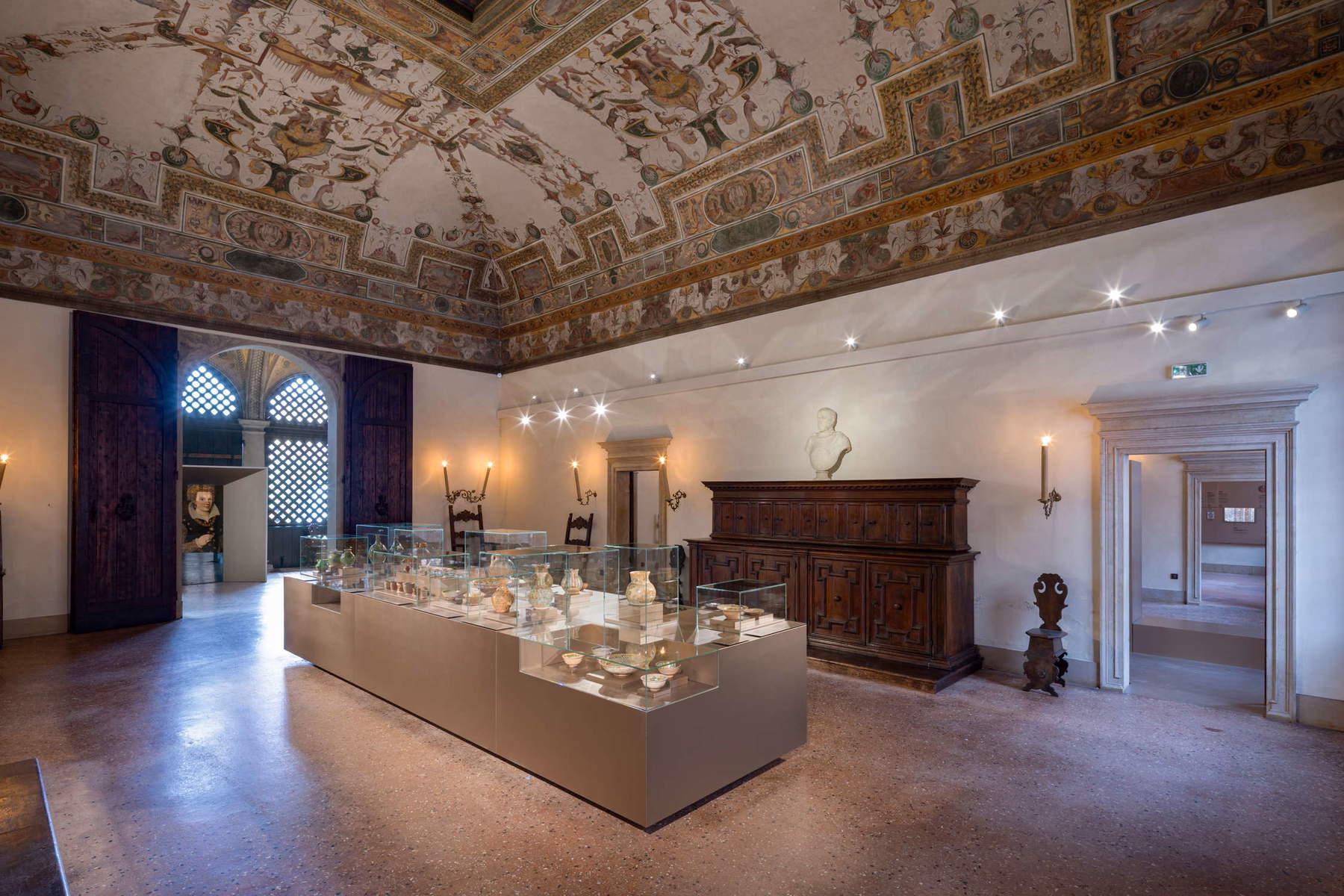
The museum tour begins in the Sala delle Imprese, dedicated to Francesco d’Este and enriched by rare numismatic specimens displayed for the first time and chosen from the collection of the Musei d’Arte Antica. The Loggetta dei Ritratti houses the only certain portrait of Marfisa d’Este and a modern copy, dated 1938, of a 16th-century painting. The Sala di Fetonte, so named because of the canvas placed on the ceiling by Barbantini and mistakenly believed to be a depiction of Phaeton’s fall into the Eridane, allows visitors to observe floor tiles and artifacts that reconstruct the daily life of the residence, while the Sala dei Banchetti still preserves furnishings and paintings selected by Barbantini to reconstruct the dining room.
It continues in the Studiolo, with its restored 18th-century mandola and multimedia content on the reserved music of the Este court, offers a sensory experience that affects multiple senses. The visit continues in the Great Hall, thought of as a connecting and representative area together, with ceramics from the second half of the 16th century and the beginning of the 17th from the Museums of Ancient Art and the Estense Foundation, while the Fireplace Room collects caskets, bronzes and sculptures, completing the tour with multimedia apparatus and infographics on the history of the Palazzina.
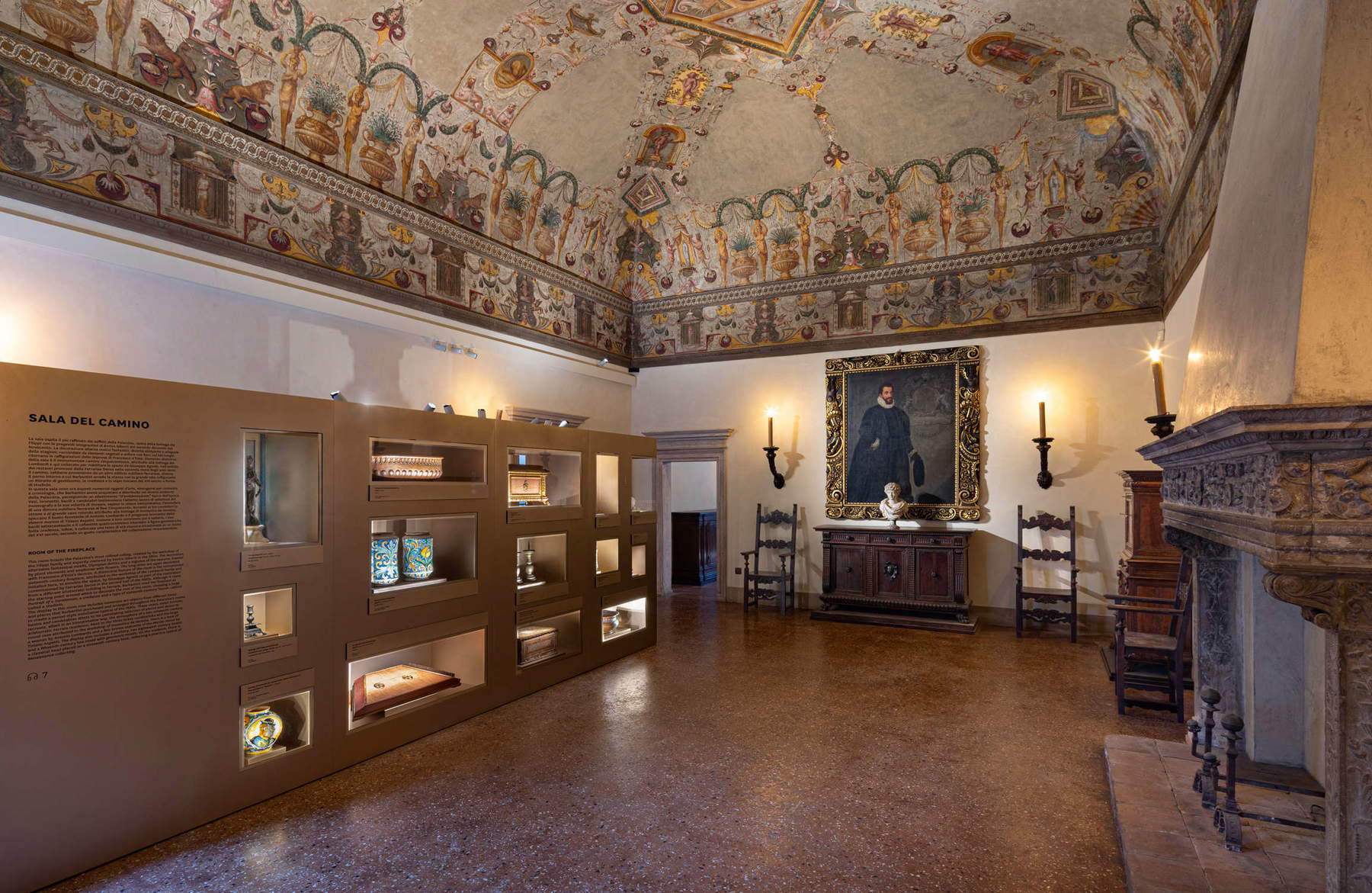
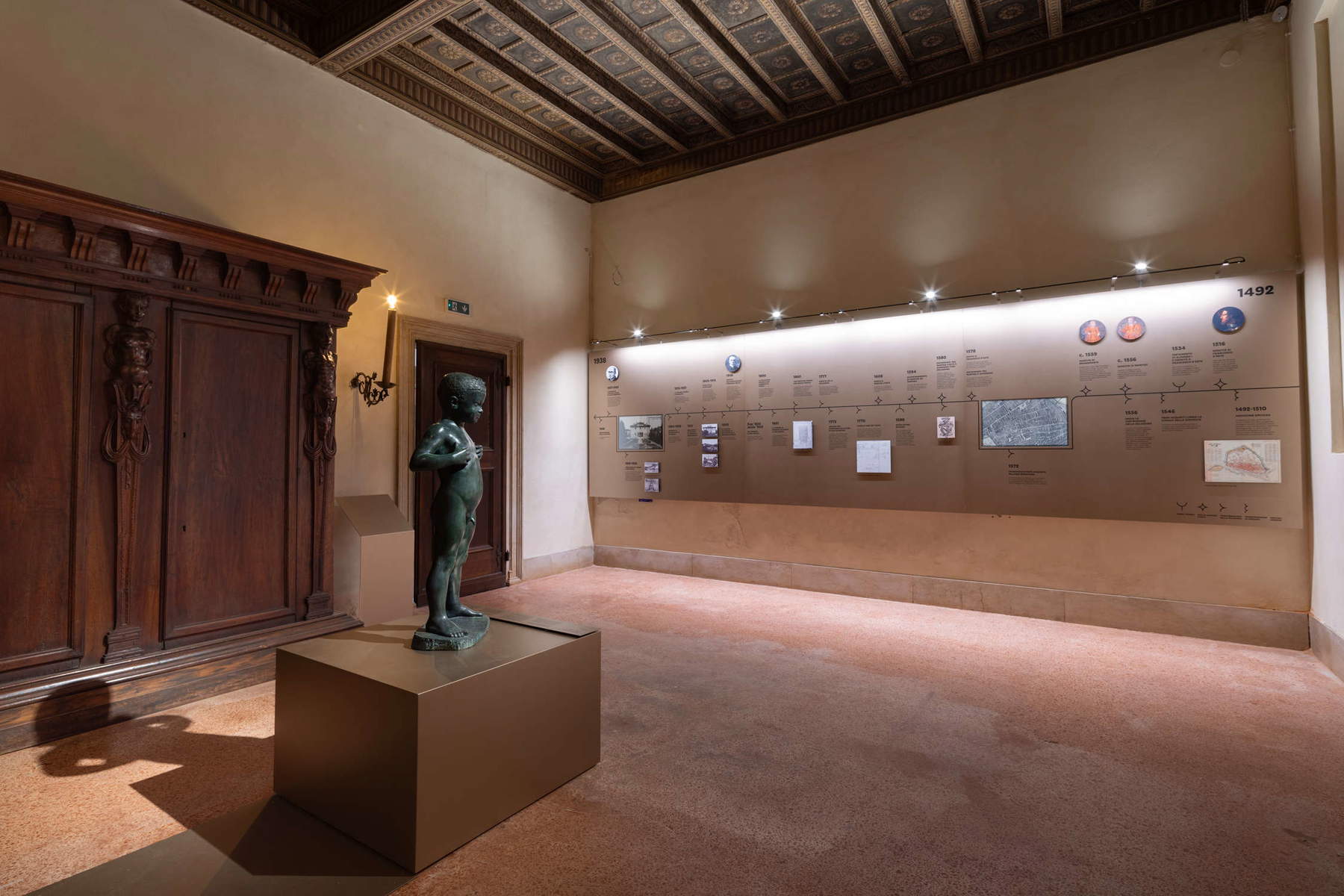
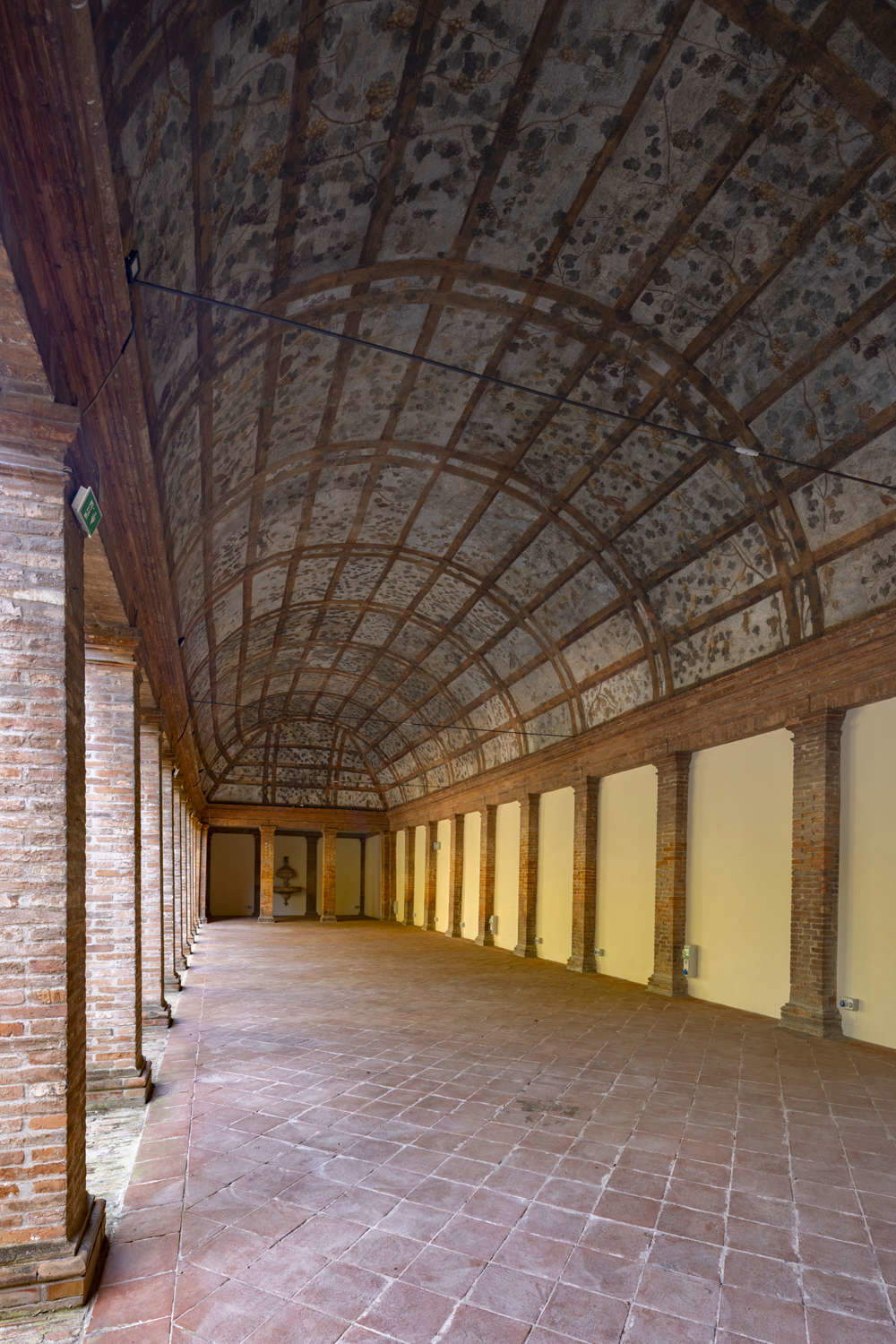
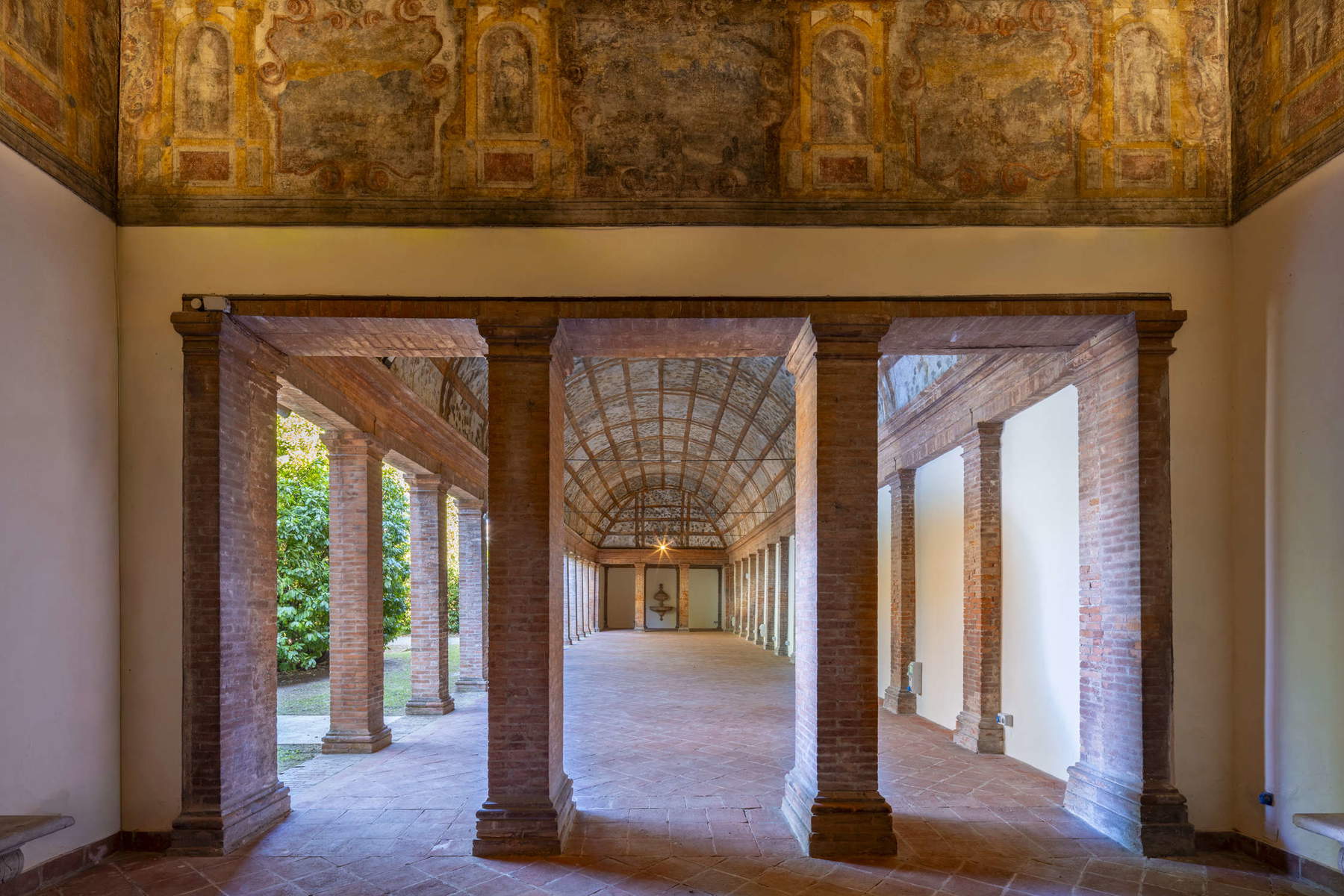
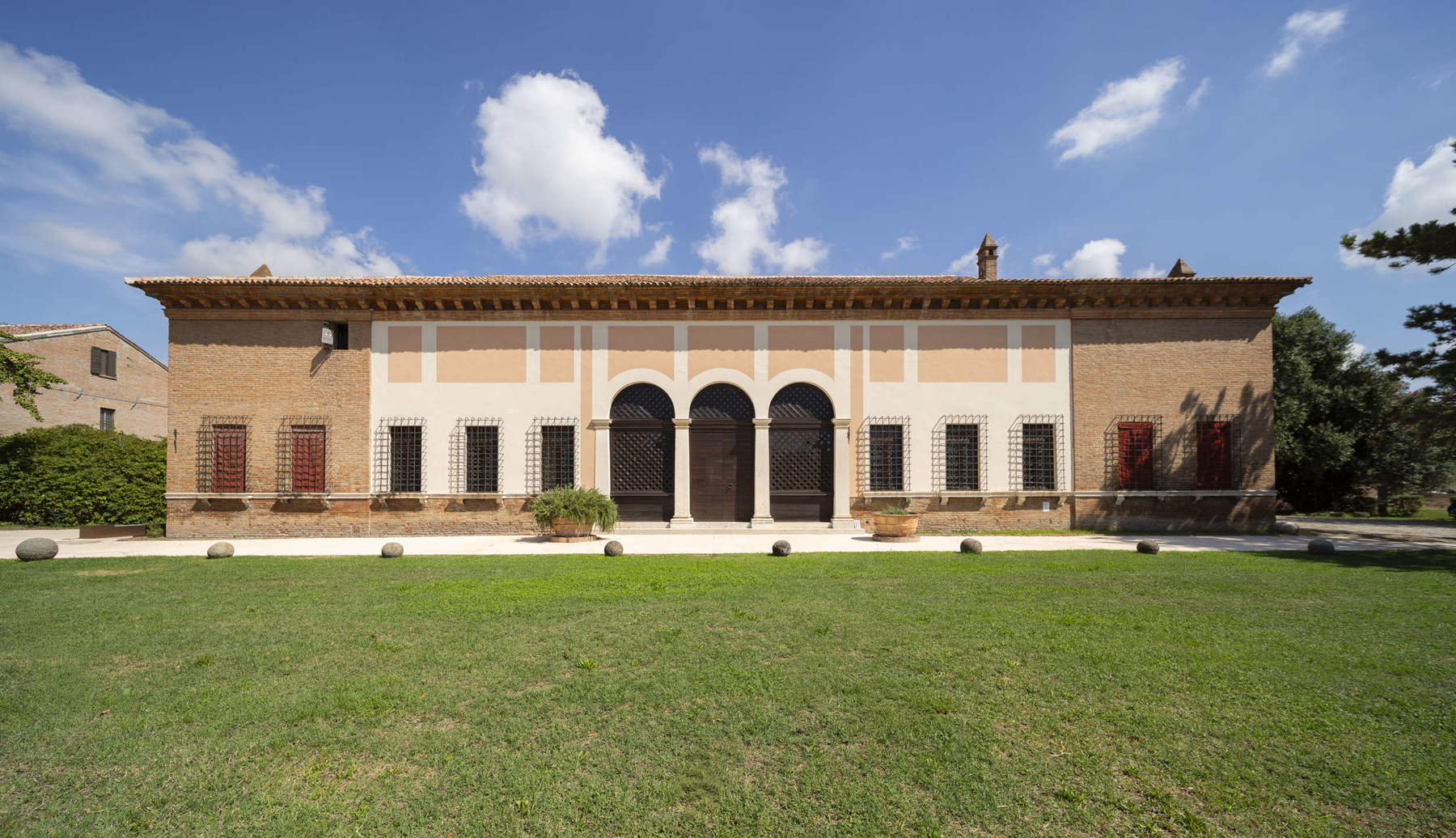
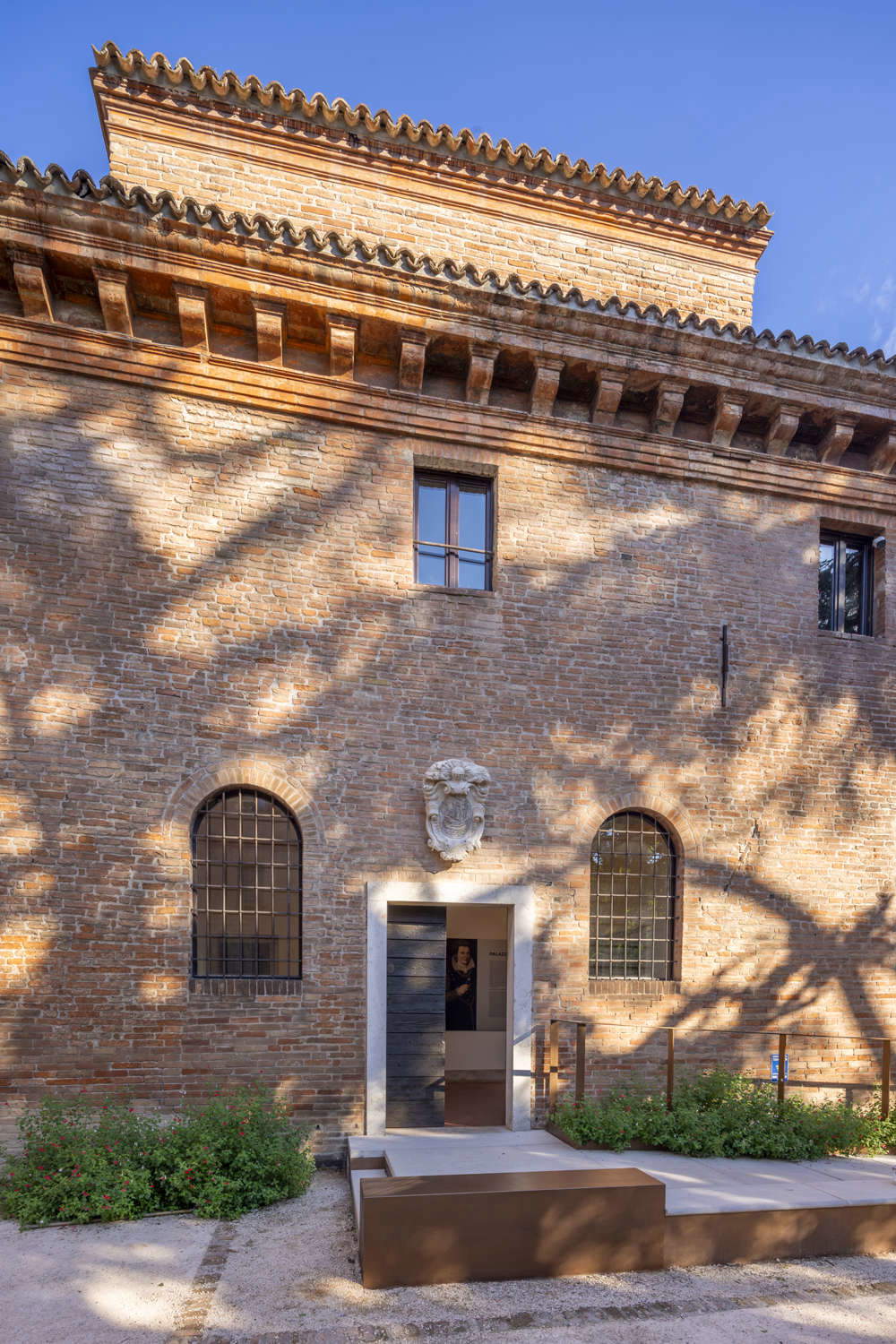
Structural and museographic interventions included post-earthquake consolidation works, re-roofing, restoration of frescoed ceilings, fixtures and furnishings, renovation of services and the ticket office, construction of the access ramp, and upgrading of electrical and air conditioning systems. The total investment exceeds 1.1 million euros (1,170,519.67), of which some 545,519.76 euros came from regional contributions and 625,000 from municipal funds, with an additional 146,952 euros earmarked for the restoration of the works and 164,944 euros for new structures and lighting, plus 24,274 euros for accessible supports.
On the occasion of the reopening, a program of cultural initiatives will kick off: starting Sept. 11, eight meetings will be held in collaboration with Ferrariae Decus, dedicated to Marfisa, the decoration of the Palazzina, Ferrara ceramics, Barbantini’s installation and the relationship with Torquato Tasso, with talks by restorers, lecturers and researchers. There will also be guided tours by conservators from the Museums of Ancient Art (archaeologist Francesca Acqui and art historian Romeo Pio Cristofori) on Fridays, Sept. 19 and 26 and Oct. 10 and 31 at 5:30 p.m., by appointment, to allow the public to learn more about the history and secrets of one of Ferrara’s Renaissance symbols.
 |
| Ferrara, Palazzina di Marfisa d'Este reopens: beautiful Renaissance mansion renovated |
Warning: the translation into English of the original Italian article was created using automatic tools. We undertake to review all articles, but we do not guarantee the total absence of inaccuracies in the translation due to the program. You can find the original by clicking on the ITA button. If you find any mistake,please contact us.